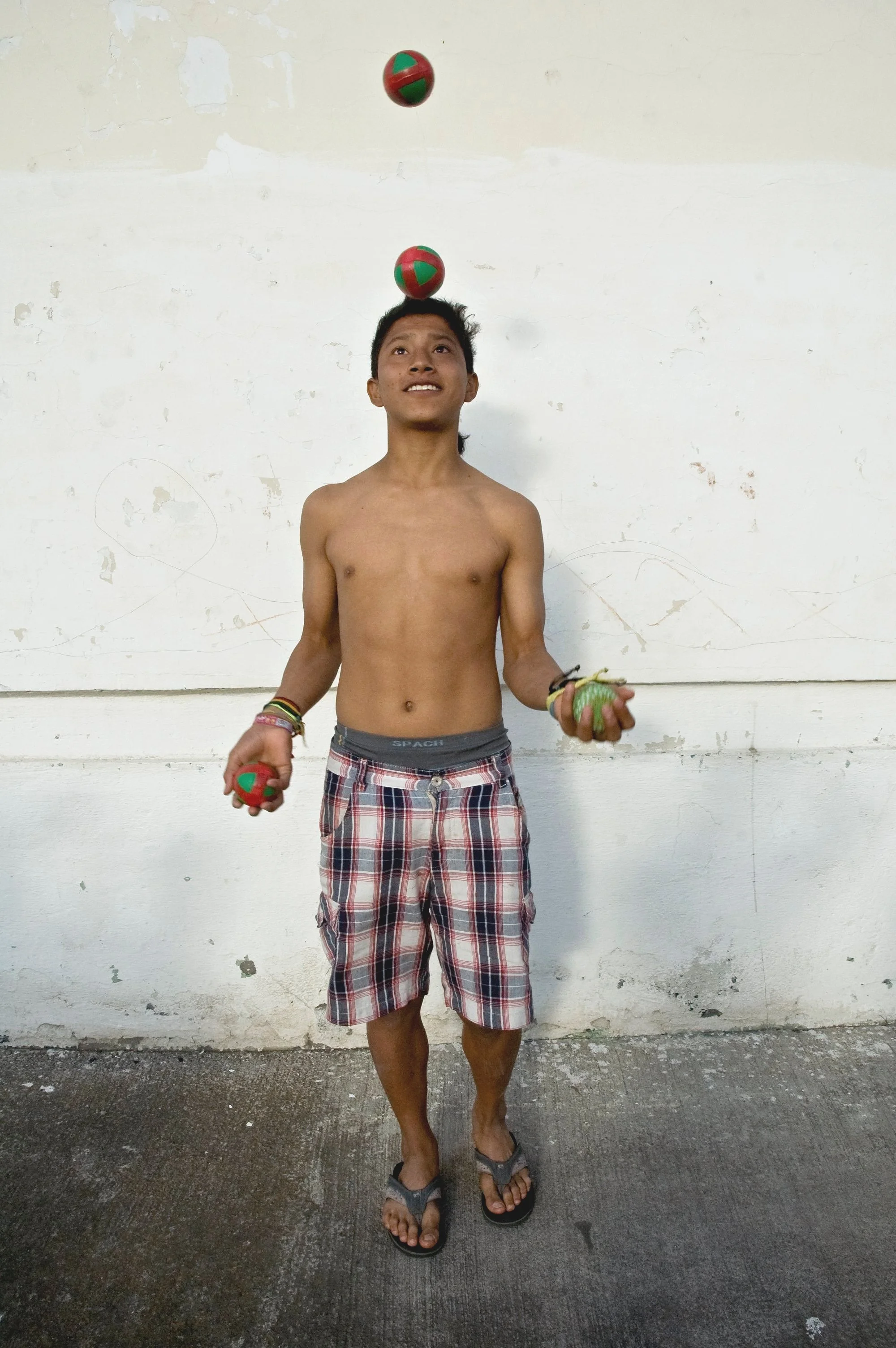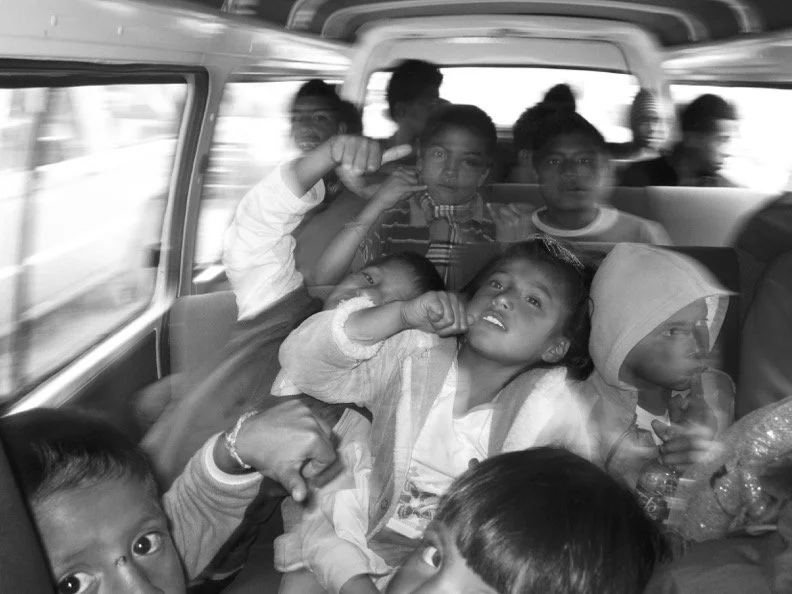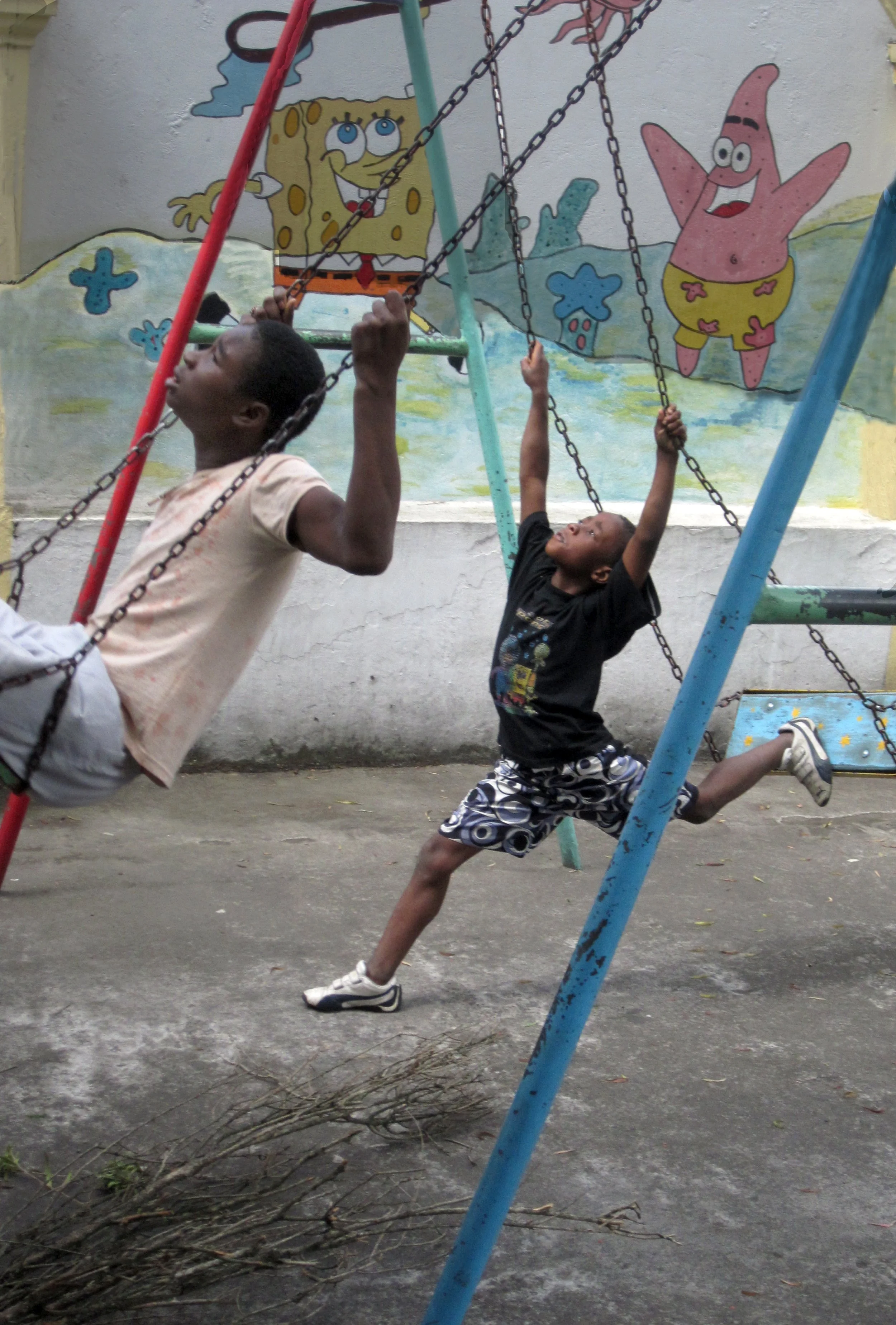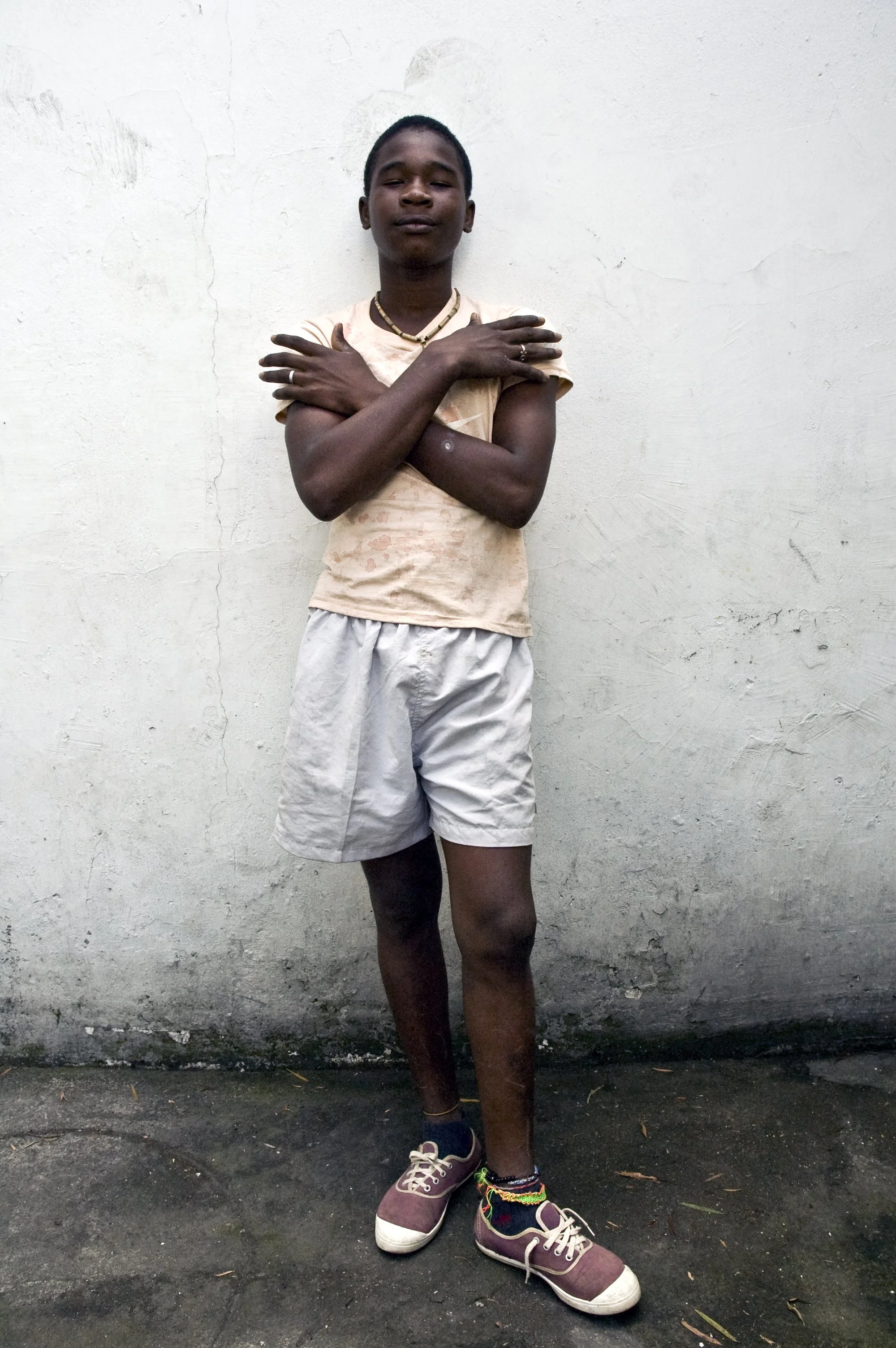Sacar Adelante Mi Familia: To Bring My Family Forward Un Proyecto por “Chicos en las Calles”: A Project for Children of the Streets ©2011
A collaboration with Jerolyn Bahm-Colombik, Roger Colombik, Gina Cicerone: Director of VASE, Ximena Yerovi: VASE, and Designers M Wright and Rose Newton (photographs by Jerolyn & Roger)
The urban pleasures of outdoor cafés in the Centro Historico are not without their burden of mendicants and merchants vying for attention. The shoeshine boys are relentless. Shine! Shine! Tus zapatos estan sucio. ¡Muy, muy sucio! Lunch is growing cold and patience is growing thin. Their plea becomes a mantra as accusatory fingers point in unison at the footwear in question. The boys can sense our resolve weakening. It’s their eyes, those beautiful deep brown eyes. It’s the Andean rosy cheeks. It’s the gringo guilt. Besides, this is their turf and four weeks on the road has our boots in dire need of resuscitation. Lunch can wait.
Mateo and Juan quickly set up shop on the sidewalk and attack the leather. Their hands are a somber color field painting of child labor, of browns and blacks and reds that stain deep into the social strata of the city. Conversation flows easily along the surface of their lives – How long have they worked the streets? Do the police leave them alone? Is there a shelter where they are welcomed? A question about family creates an awkward silence as they bury their heads into their labor.
Jerolyn’s intuitive nature shifts the mood with a request for a song. Mateo continues to polish but we can sense his body ease and notice a smile crease his lips. Expecting the youthful exuberance of pop, rap or bachata, his voice startles us with a resonance that channels an old gospel hymn. The words are in Quichua and the atmosphere is devotional. The flower sellers hug their bouquets and utensils are silently laid to rest on nearby tables as three minutes of rapture transport all of us beyond the din of the city. Mateo accepts our praise with a humble nod and packs his little wooden crate.
As artists we dream of these moments – when a spontaneous combustion of beauty launches us into uncharted territory. Logistics and all manner of practical thinking are cast aside as ideas are scribbled upon napkins. We imagine Mateo and the shoeshine boys walking the streets of Quito as photographs of their hands are projected upon buildings and plazas. Recordings of their personal stories echo through the city in a soundtrack of dreams, hardships and songs. Details can wait. Our flight leaves in the morning but we’ll figure it out. We’re coming back.
And then life intervenes.
Three years pass before an opportunity unfolds with the necessary fusion of time, funding and collaborative partners. Past experience has taught us well in regards to working in distant locales. Stay open to change and always have a partner who knows the terrain and navigates it well. Throughout Ecuador, there is an abundance of selfless individuals and child welfare agencies that devote themselves to providing unconditional love, education and a nurturing home to chicos en las calles (children of the streets). We contact several organizations, explaining our background and thoughts on a project. The plans are a bit vague at this point. A lovely hymn was the genesis. A collection of personal stories from chicos en las calles could well be the trajectory. We receive several confirmations from agencies in Quito that would like to know more. One of the responses mentions that if we prefer to communicate in English, then by all means they can accommodate us. We breathe a sigh of relief, relax the jumbled language vortex in our brains and call Gina Ciccerone, Director of VASE – Voluntariado para la Ayuda Social del Ecuador.
Gina coordinates a program that works to strengthen intercultural relations, promote voluntary social support and inspire a commitment to global citizenship. The organization places volunteers in youth shelters throughout the region to assist in the development of children who suffer under severe domestic and economic circumstances. Gina’s experience with chicos en las calles enables her to speak with authority on issues of establishing trust and a sense of community with the children. An abundance of patience and boundless compassion are the foundation. Engaging activities, listening well and a good sense of humor are the bricks and mortar. She recommends that we visit two of the shelters that she works closely with, Mi Caleta (My Shelter) in Quito and Don Bosco Hacienda in Ambato.
~
There is an old blue van that cruises through the streets of Quito as evening descends and the majestic peak of volcan Pichincha succumbs to darkness. A sign on the vehicle announces Mi Caleta. The driver stops at familiar haunts where children tend to gather, sometimes encamped in a small group, sometimes alone where fear holds sway. The driver initiates a conversation with the children, inquiring if they need help, if they would like assistance, if they need shelter. No strings attached and no coercion. The only concern is to try and meet the present and immediate needs of children who feel they have nowhere to go, no one to whom they can turn to for guidance and safety. If the child is interested, he can hop into the vehicle for a ride to Mi Caleta.
The child soon discovers that Mi Caleta is much more than a physical shelter for the night. It is a place of opportunity where a childhood can be rediscovered. At Mi Caleta and at the many shelters throughout the region, chicos en las calles can awaken to a sense of normalcy where personal attention, safety, nutrition, education and counseling are available. They are welcomed into a community where everyone shares in the responsibility for elevating the quality of life at the shelter. The cooks are surrogate mothers, the volunteers impart maturity and friendship and the program directors handle disciplinary issues with paternal guidance. The atmosphere resembles a large extended family, complete with household chores, squabbles, crying and laughter.
To undertake a project within this rambunctious household requires first and foremost earning the trust of the boys. Sharing meals, chasing a twelve year old on the soccer field, conducting drawing lessons and simply hanging out soon provide comfort and willingness for the kids to talk about themselves. Their dreams, stories and occasional tears fill our days. Time and again, we discover a profound sense of compassion and hope for the future in children who have survived serious psychological/physical trauma. When asking the kids about what they feel is their unique gift to the world, responses of “happiness,” “affection” and “forgiveness” are common. Their maturity humbles us and makes us very aware that we have much to learn from them. Several boys speak passionately about reuniting with their families, casting aside a troubled past to envision a better future. The title of the project, Sacar Adelante Mi Familia comes from a statement by David, a precocious sixteen year old whose dream is to finish his studies and work towards bringing his family out of their difficult economic situation.
These children have indeed rediscovered their childhood and the ability to dream and foresee the possibility of a future. They want to make a contribution to their families and to their society. What a beautiful gift for us all.
This project is intended as an open source program where our ideas, initiatives and procedures can be utilized to develop a system where more chicos en las calles can share their stories and dreams with the world and discover that their voice has an audience. That someone still cares.







